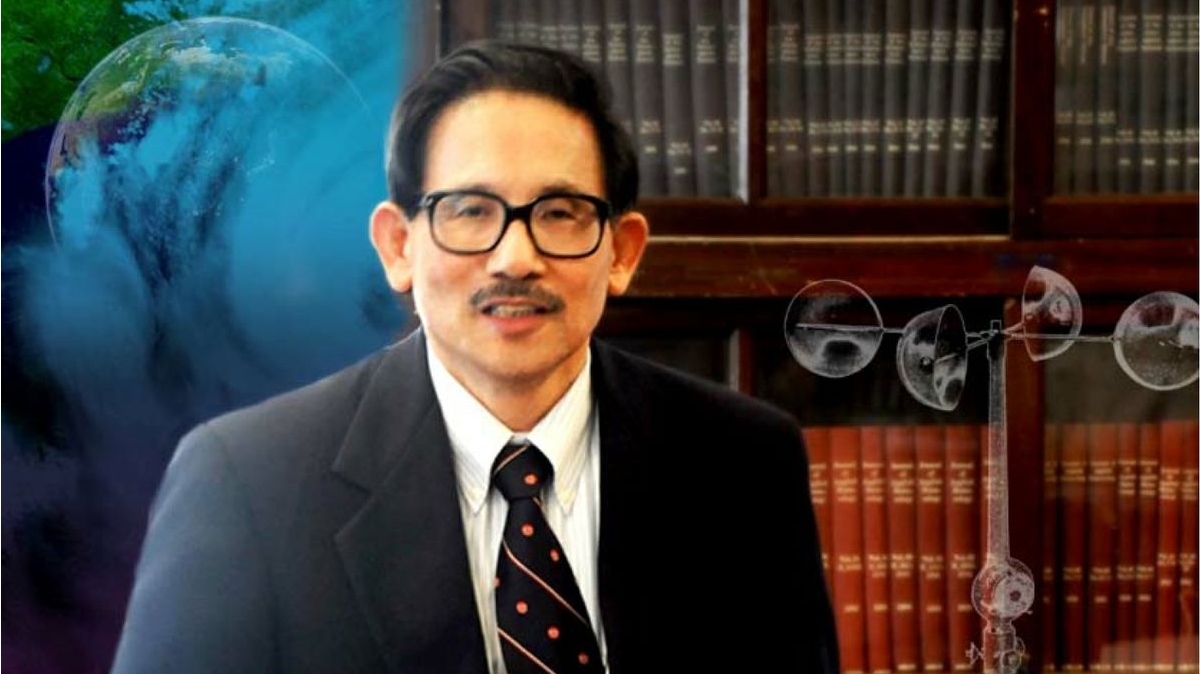Kuo-Nan Liou, a distinguished professor in UCLA’s Department of Atmospheric and Oceanic Sciences, has spent his career conducting this type of forward-thinking and future-focused research. Most recently, Dr. Liou has used science and technology to predict the effects of human interaction with the atmosphere on our global climate.
Beginning his academic career as an undergraduate at the National Taiwan University to teaching and progressing into an active researcher at the University of Utah, then a leading faculty member at UCLA, Dr. Liou has become a pioneer in the science of atmospheric physics. From studying light absorption through snow or black carbon systems and light scattering by ice crystals, to regional and global climate modeling involving 3D mountains and snow fields, Liou has created a paradigm shift through penetrative contributions to not only the world of climate change science, but also the understanding of an individual’s effect on the world’s climate.
He is not on this progressive mission alone. Back in 2006, Dr. Liou collaborated with his colleague Dr. Randy Friedl from the National Aeronautics and Space Administration’s (NASA) Jet Propulsion Laboratory (JPL) at the California Institute of Technology. Together, Liou and Friedl founded the Joint Institute for Regional Earth System Science and Engineering (JIFRESSE). JIFRESSE is an interdisciplinary research group consisting of UCLA and JPL scientists and engineers in cutting-edge Earth system science research. In July 2019, Liou and his UCLA associates were awarded a three-year, $2.1 million grant from the National Oceanic and Atmospheric Administration’s Climate Program Office to improve climate models. (Read UCLA’s press release about the grant here.)
While looking out into the atmosphere, we cannot physically see how snow impurities, dust, and black carbon affect the amount of energy the Earth’s surface absorbs from the sun. But with the climate model Dr. Liou and his research associates developed, coupled with satellite data, these impurities can be identified and studied. The new grant will allow the JIFRESSE team to develop more advanced and efficacious models on the fundamental interactions between the atmosphere and the land.
Dr. Liou has worked with his colleagues on such models to drastically improve climate projection in ways that many modern weather and climate scientists had previously rarely considered. Surprising changes in weather patterns, such as intensified rain pour prior to unexpected thunder and lightning, may be results of ice clouds in the Earth’s atmosphere. These clouds may have extreme effects on weather: in the immediate, short-term timeline, changes occur in the atmosphere and local climate; in the long-term timeline, lasting changes in weather patterns on a global scale. Until recently, the exact impact of man-made aerosols on these ice clouds had remained unclear. Such human-made aerosols include particles from fossil fuel combustion, automobiles, biomass burning in the clearing of farm waste, and power plants.
Liou along with his colleagues, Dr. Bin Zhao, an earth scientist at Pacific Northwest National Laboratory, and Dr. Yu Gu, Assistant Director and researcher of JIFRESSE, published research in Nature Geoscience (Zhao, Gu, and Liou, et al. 2019) that has started to provide greater clarity on the issue. Being the first to use long-term satellite data and a comprehensive and meticulous cloud model to study ice clouds, they found compelling evidence that a large quantity of ice nucleating particles (an important factor in the formation of ice clouds) are produced by human activities. Until now, no one had been aware that some of the most extreme storms and precipitation could be more directly correlated with human action.
During the study of human impact on the environment, the JIFRESSE team found their research could provide tangible applications to improve the poor air conditions in China. Even as the Chinese government implemented restrictions on certain fuels and pollutants at an industrial level, the JIFRESSE team found in a study published in the Proceeding of the National Academy of Sciences (PNAS) (Zhao et al., 2018) that these restrictions accounted for only a fraction of the 29% reduction in pollution-related deaths between 2005 and 2015. Instead, the more important change had come from urging rural residents to switch from burning wood and grasses to cleaner fuels for cooking.
This reduction in rural households’ use of wood and other fuels for cooking and heating, along with a switch to utilizing cleaner fuels as rural populations migrated to cities caused a decrease in particulate matter in the air that helped improve air quality in China. The JIFRESSE team found that about 80% of this improvement was due to these rural household changes.
These aspects of Dr. Liou’s and his associates’ research have made it clear that no one place, no one group, and no one country is free of the impact of human interaction on climate and climate change. With the additional funding, the JIFRESSE research team will use of state-of-the-art science and technology to continue leading the way in understanding fundamental interactions between the atmosphere, the Earth, and mankind.
Tags: News
